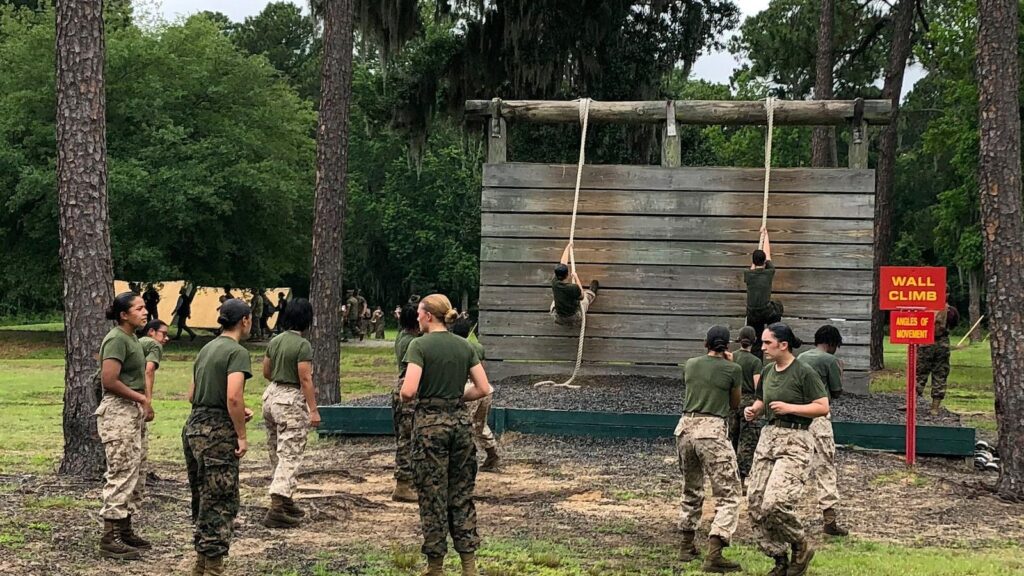Review of Military Standards Sparks Debate
WASHINGTON — The Secretary of Defense’s initiative to reassess military standards concerning combat, physical fitness, and personal appearance has opened a complex discussion surrounding the varying regulations across different military branches. This move raises an important question: Should there be uniformity in standards, or should the unique characteristics of each service, changing social dynamics, and the realities of recruitment inform policy decisions?
Opposition to Gender-Inclusive Combat Roles
Public figure Pete Hegseth has expressed strong opposition to women occupying combat roles, lamenting that standards have been relaxed to accommodate female personnel. He has indicated that evaluations to address these perceived inequities are forthcoming. Hegseth advocates for standardized criteria across the board, regardless of gender, prompting military leaders to expect potential changes as reviews progress.
Gathering Military Fitness Information
In a memo dated March 12, Hegseth directed the undersecretary for personnel to compile information on “military standards pertaining to physical fitness, body composition, and grooming,” emphasizing areas such as grooming standards, including beards.
Commitment to Upholding Standards
“We must remain committed to the standards that empower the men and women of our military to safeguard American citizens and maintain our status as the world’s most potent and capable fighting force,” he stated.
Impact on Women at the Frontlines
This initiative is perceived as a challenge to the successful integration of women in frontline positions—a change that has proved effective for years. In his memo, Hegseth called for a review of the modifications to standards since January 1, 2015, the year when the Department of Defense opened all combat roles to women.
Uniform vs. Tailored Fitness Standards
The proposal brings to light whether Hegseth aims to standardize fitness testing across military branches, making them gender- and age-neutral, or if he intends to maintain minimum standards while permitting services to enforce more rigorous requirements as needed.
Challenges in Recruitment and Retention
Removing the current practice of scoring annual fitness tests based on age and gender could have detrimental effects on recruitment and retention if service members were required to meet more demanding standards without adequate transition time. Typically, such changes are implemented gradually.
Current Physical Fitness Standards
The military currently employs a two-part system for physical fitness standards:
- Routine annual fitness tests with varying requirements according to gender and age.
- Rigorous standards for specific combat, special operations, infantry, armor, parajumpers, and equivalent roles, which are consistent across genders and ages.
Fitness Test Variations Across Services
Presently, the military’s fitness testing framework lacks consistency. Each service mandates basic tests that must be passed annually, though the criteria differ significantly. For instance, a male aged 20 is required to complete a run in a shorter time than a woman or a 30-year-old male for maximum scoring.
Evolving Test Formats
Historically, fitness tests were simpler, comprising basic components like running, push-ups, and sit-ups. Over time, these tests have evolved to include multiple options. The Air Force allows members to choose between a 1.5-mile run or a sprint, while other services sometimes permit biking or rowing as cardio substitutes and have increasingly favored planks over sit-ups.
Army and Marine Corps Standards
Both the Army and Marines have devised more comprehensive fitness assessments. The Army, following a significant overhaul, introduced six evaluative events, including deadlifts, running, planks, push-ups, a standing power throw, and a combined sprint/drag/carry exercise. These events are designed to simulate real-world military scenarios, and early initiatives to create gender- and age-neutral tests were abandoned due to challenges that arose.
Marine Corps Physical Fitness Evaluation
The Marine Corps administers two tests annually: a physical fitness test that features a three-mile run, pull-ups, and planks in the first half of the year, followed by a combat fitness test entailing an 880-meter run in combat boots, an ammo-can lift, and drills that replicate troop maneuvers under fire.
Job-Specific Standards
Specific military roles, such as special operations, infantry, armor, and parajumping, necessitate elevated physical, mental, and psychological benchmarks. These positions are held to stringent requirements that are uniform for all individuals, regardless of gender or age. For instance, those aspiring to become Green Berets or Navy SEALs must complete intensive qualification courses that last several months.
Adjustments in Military Standards
Following the Pentagon’s decision to allow women in all combat positions, the Army established particular fitness standards for each military role that are consistent irrespective of gender or age. Those enlisting in infantry or armor roles must meet specific physical assessments with heightened expectations to qualify for those specialties.
The Shift in Standards
Over time, diverse standards and requirements have been adjusted due to factors including religious considerations, recruitment challenges, and changes in societal trends. These shifts are primarily influenced by the need to appeal to a modern recruiting landscape, which includes a varied demographic of potential candidates, some of whom may face academic or legal barriers.
Current Recruitment Efforts
The Navy, for instance, began implementing strategies in 2022 to recruit individuals with lower scores on the Armed Services Qualification Test to meet recruitment targets. A year later, it started accepting applicants who did not possess high school diplomas or GEDs, a departure from the norms primarily maintained by other branches. This shift was justified by the Navy’s assertion that it needed these recruits to fill labor-intensive positions.
Focus on Physical Fitness
Hegseth has largely concentrated on physical fitness issues, with less emphasis on mental fitness standards. Additionally, several military branches have revised policies concerning personal grooming, permitting diverse hairstyles for women and allowing beards in certain situations for medical or religious reasons. Moreover, recent years have seen a relaxation of marijuana policies across most services.
Changes in Tattoo Regulations
Likewise, military branches have loosened restrictions regarding tattoos, now permitting full-sleeve tattoos and allowing smaller tattoos on the neck and fingers.


